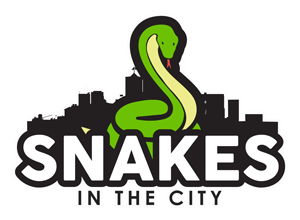Diamond Python
Non-venomous
Other Name: Diamond Python, Carpet Snake
Significance to Humans
Bites may cause substantial lacerations or punctures.
General Description
They are quite variable in colour and pattern, typically being predominantly dark olive to black in colour with most dorsal scales having a yellow (or cream) spot in the centre (hence spilota, meaning spotted). Along the body and tail are numerous clusters of yellow or cream scales that form ‘rosettes’ that look a bit like diamonds (hence their common name). The underside is white, cream or even yellowish in colour, although it is often spotted with black.
The average adult size of this subspecies is usually about 2 m (6.6 ft) in total length, although they are known to reach maximum total lengths of about 3 m (9.8 ft), with very rare specimens recorded at up to 4 m (13 ft). They also are known for living in the forests of South Wales.
Head is distinct from the neck. Deeply pitted scales (infralabials) along bottom jaw and to a lesser extent the upper jaw (supralabials) with small “granular scattered scales on top of the head. Midbody scales in 40 – 60 rows.
Average Length
Around 2.1 metres but large specimens exceed 3 meters.
Habitat in Sydney Region
Occupies all habitats from rainforest, wet sclerophyll forests and dry woodland through to suburban backyards and the periphery of highly disturbed farmland.
General Habits
Most commonly encountered snake within the region. Active day and night. Large specimens can take small suburban pets such as dogs, cats and guinea pigs with smaller specimens taking caged birds.
Diet
Mostly mammals such as rodents, possums etc; also some reptiles, birds & frogs
Local distribution
Recorded from all suburbs of the Greater Sydney region including the inner city with highest densities occurring in leafy suburbs.
Around the Home
Will utilise all above ground environs such as roof and wall cavities, exposed beams of verandahs and pergolas, sheds and garages. Often resides in the heavy foliage of trees and shrubs. At ground level will utilize dense vegetation, miscellaneous large ground litter such as stored building materials and accumulated garden debris.
